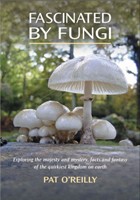Calocera pallidospathulata D. A. Reid - Pale Stagshorn
Phylum: Basidiomycota - Class: Dacrymycetes - Order: Dacrymycetales - Family: Dacrymycetaceae
Distribution - Taxonomic History - Etymology - Identification - Culinary Notes - Reference Sources
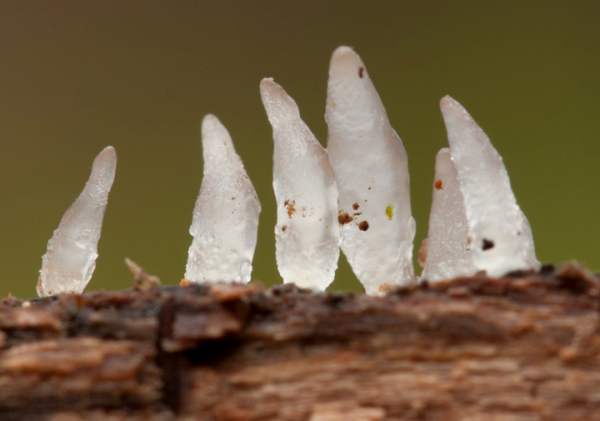
This unbranching jelly fungus, with tiny white translucent fruitbodies usually shorter than the thickness of a finger, can be seen on trunks and twigs of deciduous broadleaf trees.
Pale Stagshorn looks rather like a club fungus; however, it is much less brittle and microscopic examination reveals that it has distinctive Y-shaped basidia, which are diagnostic characteristics of members of the order Dacrymycetales.
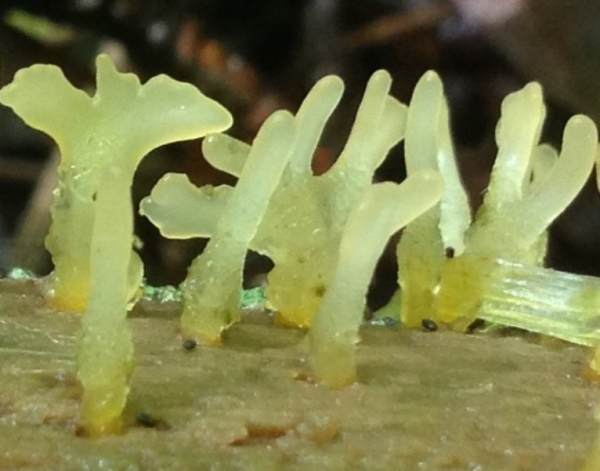
Distribution
This species was not discovered in Britain until 1969; however, it is now known to be quite common but rather localised across Britain, mainly in central and eastern England, and (very rarely) in south-east Ireland, and it is also reported from many parts of mainland Europe.
Taxonomic history
Pale Stagshorn was first described scientifically in 1974 by the British mycologist Derek Agutter Reid (1926 - 2006). It does not appear to have any synonyms.
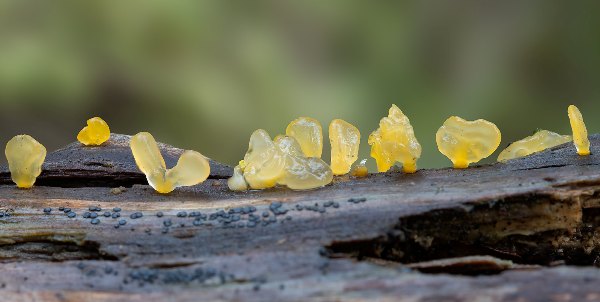
Etymology
Calo- means beautiful, while the extension -cera comes from ancient Greek and means 'like wax', so that the genus name Calocera translates to 'beautiful and waxy' - and that accurately describes the form of Calocera pallidospathulata.
Just as it sounds, the specific epithet pallidospathulata means pale (pallid-) and spathulate (= spatulate) meaning shaped like a spatula - a broad, flat flexible blade used to mix food and other substances.
Identification guide
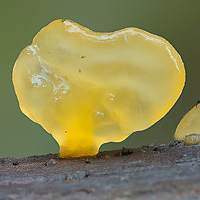 |
FruitbodyInitially pale translucent yellow (occasionally orange), becoming more palid; irregularly shaped but with rounded rather than sharp tips; greasy and viscid; occasionally forked; clustered in non-merging groups; 2 to 10mm tall and typically 1-2mm across. Rubbery and gelatinous in texture. |
SporesSausage shaped, smooth,10-15 x 3.5-5µm; inamyloid; with large oil drops; becoming septate at maturity with 1 to 3 septae (dividing walls). Spore printWhite. |
|
Odour/taste |
Not distinctive. |
Habitat & Ecological role |
Saprobic, on well-rotted trunks, stumps and fallen branches of dead conifers and broadleaf trees. |
Season |
Fruiting through most of the year in Britain, but particularly prevalent in autumn. |
Similar species |
Calocera cornea is similar but a brighter yellow, not whitish. Calocera viscosa is yellow and much larger; it has branches emanating from a short trunk. |
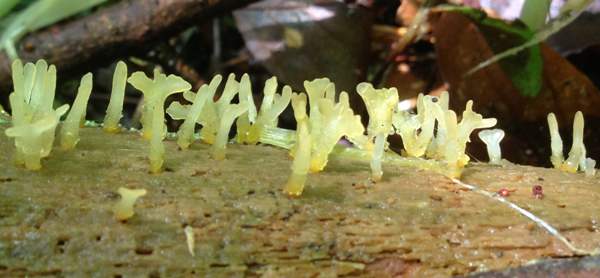
Culinary Notes
Although not known to cause poisoning, Pale Stagshorn fungus is regarded as inedible; it is also an uncommon and insubstantial fungus and so collecting it for eating would not be worthwhile.
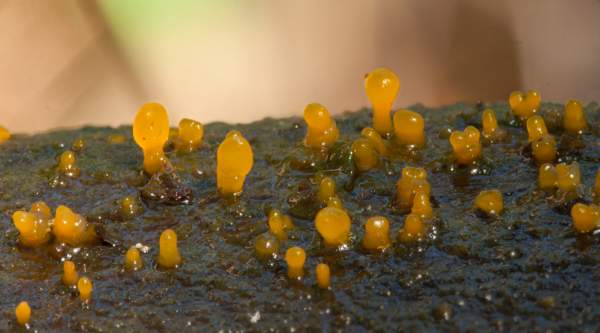
Reference Sources
Fascinated by Fungi, 2nd Edition, Pat O'Reilly 2016, reprinted by Coch-y-bonddu Books in 2022.
McNabb R.F.R. 1965. Taxonomic studies in the Dacrymycetaceae II. Calocera (Fries) Fries. New Zealand J. Bot. 3: 31–58.
BMS List of English Names for Fungi
Dictionary of the Fungi; Paul M. Kirk, Paul F. Cannon, David W. Minter and J. A. Stalpers; CABI, 2008
Taxonomic history and synonym information on these pages is drawn from many sources but in particular from the British Mycological Society's GB Checklist of Fungi.
Acknowledgements
This page includes pictures kindly contributed by Simon Harding, David Kelly and Tony Mellor.
Fascinated by Fungi. Back by popular demand, Pat O'Reilly's best-selling 450-page hardback book is available now. The latest second edition was republished with a sparkling new cover design in September 2022 by Coch-y-Bonddu Books. Full details and copies are available from the publisher's online bookshop...
